Abstract
An efficient method for isolation of a large number of plasmid mutants is described. It is based on the fact that N-methyl-N'-nitro-N-nitrosoguanidine induces a number of closely linked mutations within a short segment of the bacterial chromosome. Thus, selection for reversions of an auxotrophic marker located on the ColVBtrp plasmid yielded a large fraction (more than 50 percent) of mutants defective in some plasmid functions, including its own maintenance in the host bacteria. The results of preliminary characterization of strains carrying these mutated plasmids are presented.
Full text
PDF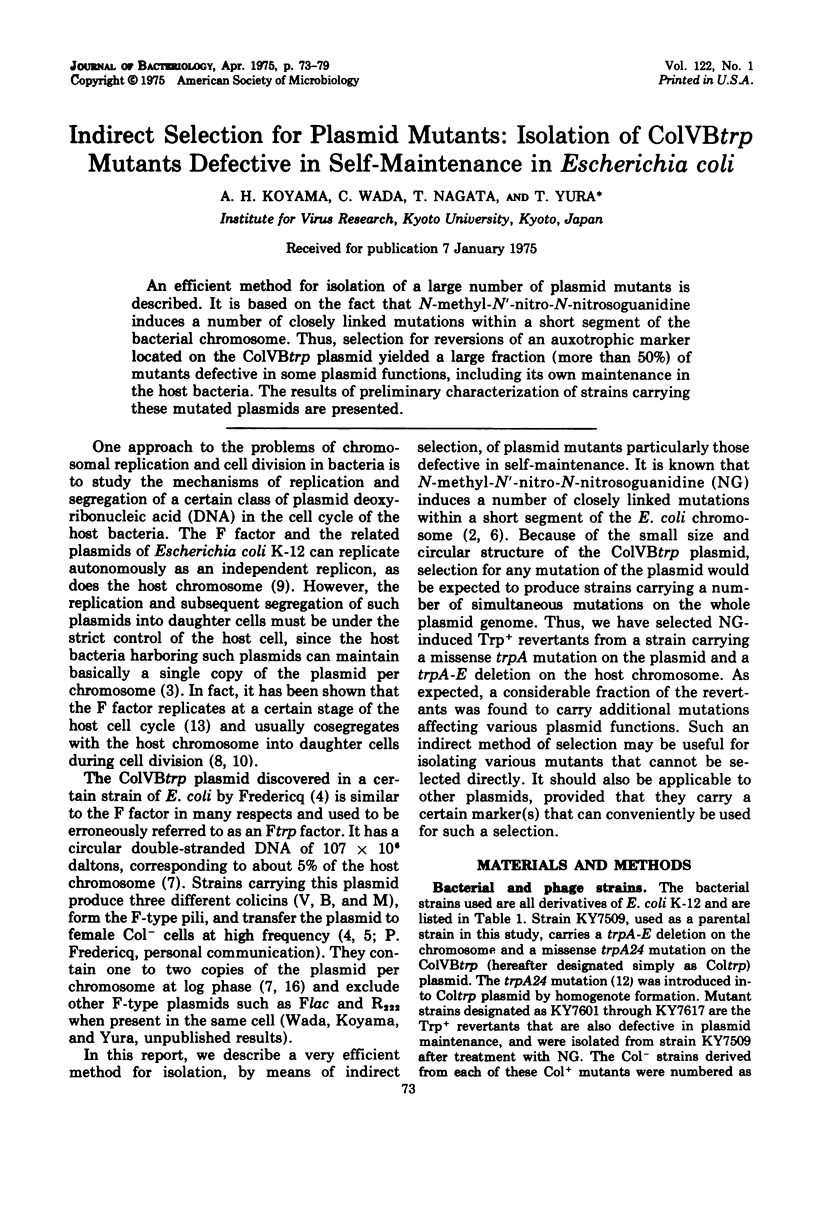
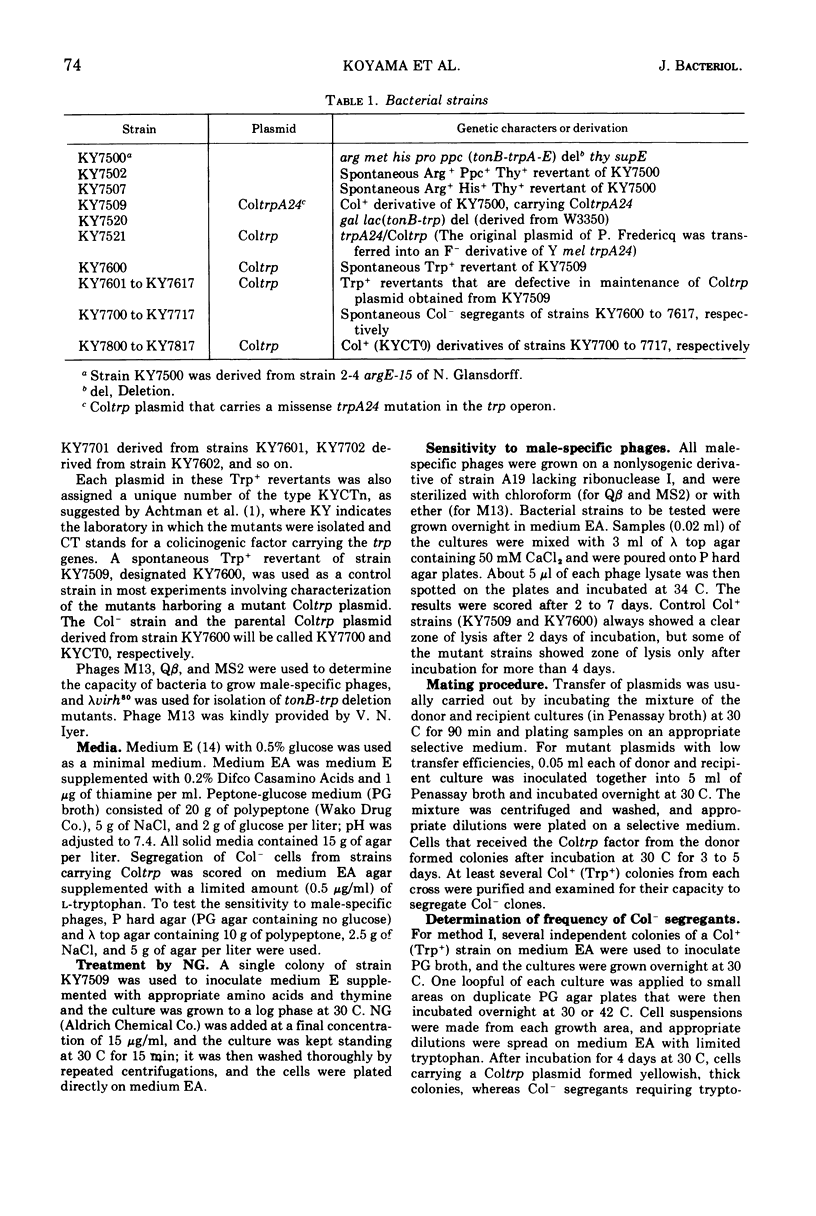
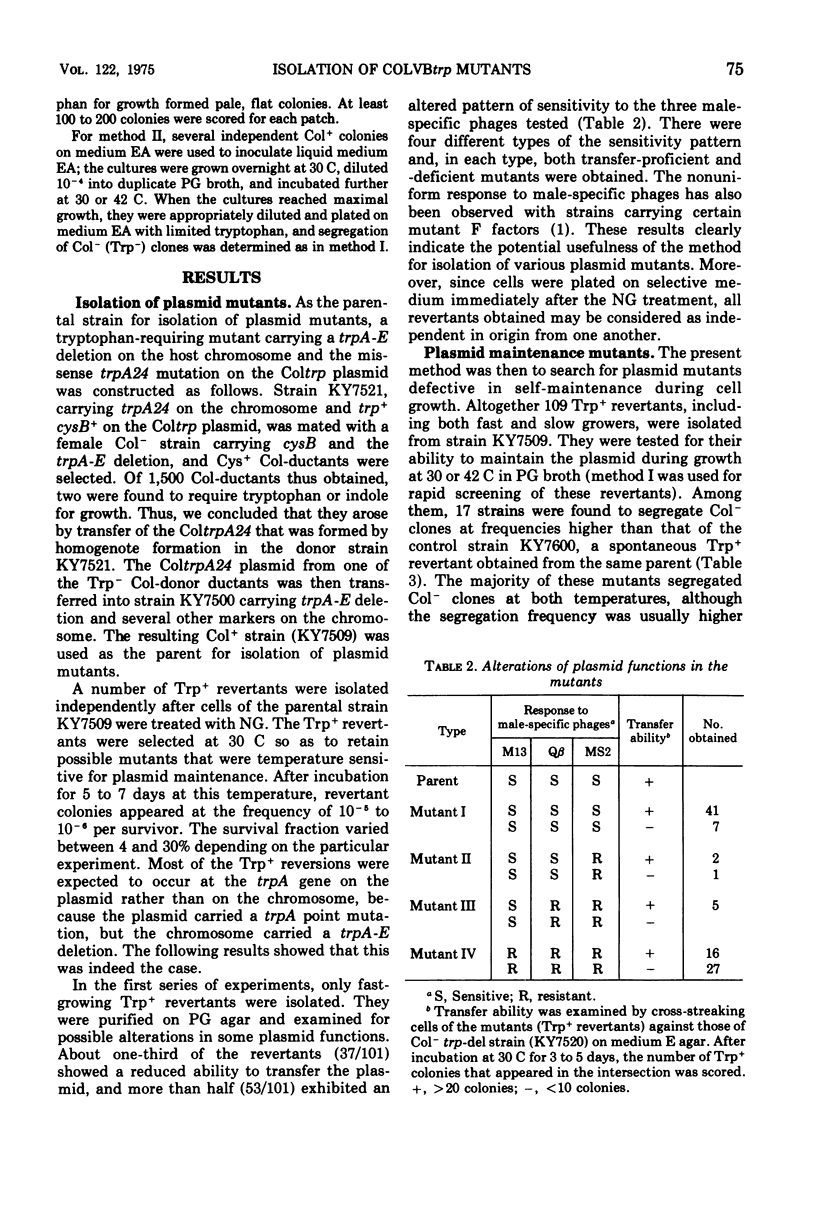
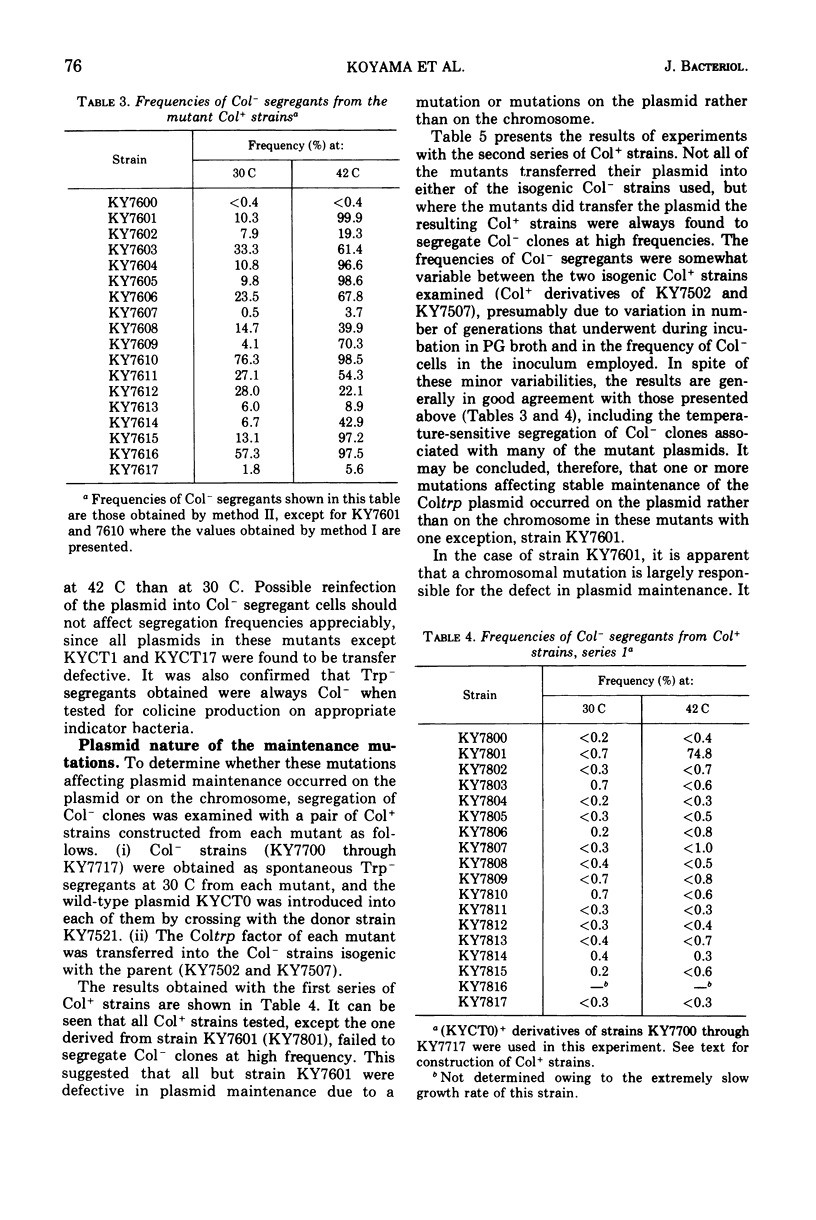
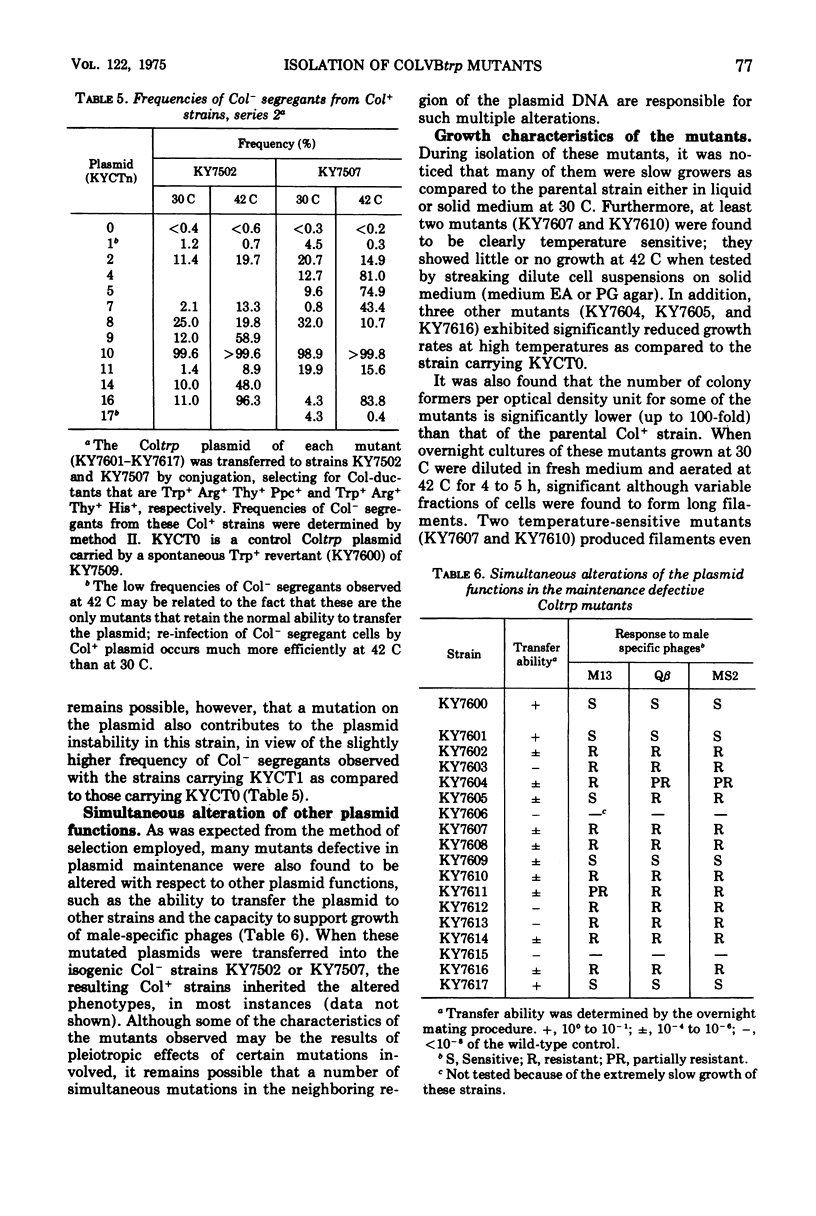
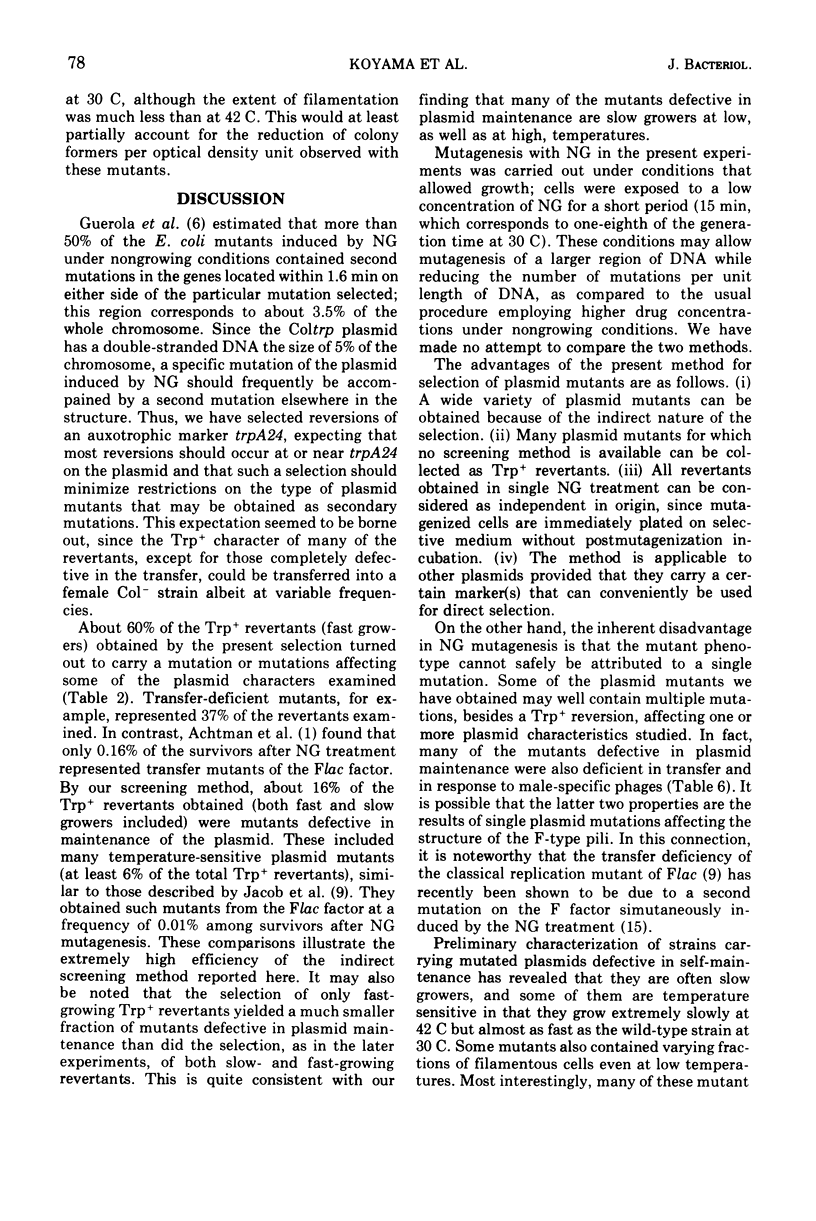
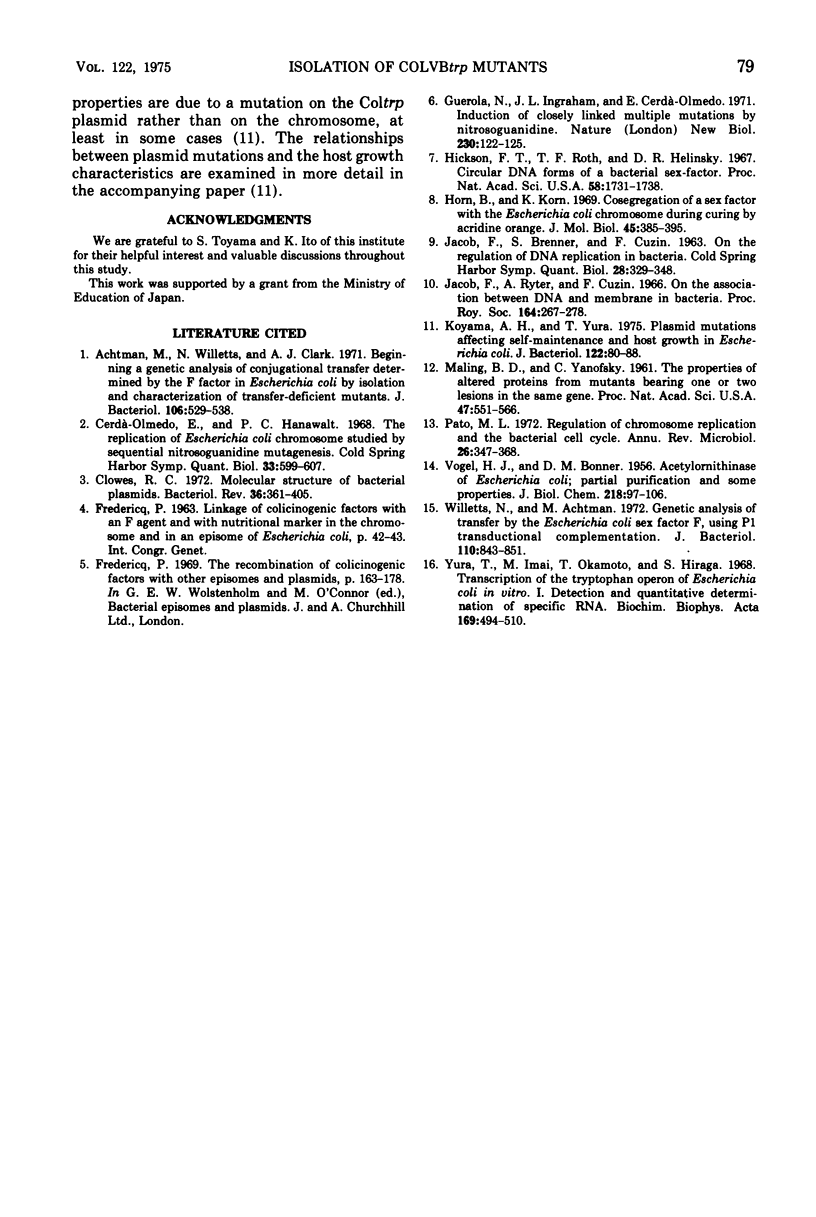
Selected References
These references are in PubMed. This may not be the complete list of references from this article.
- Achtman M., Willetts N., Clark A. J. Beginning a genetic analysis of conjugational transfer determined by the F factor in Escherichia coli by isolation and characterization of transfer-deficient mutants. J Bacteriol. 1971 May;106(2):529–538. doi: 10.1128/jb.106.2.529-538.1971. [DOI] [PMC free article] [PubMed] [Google Scholar]
- Cerdá-Olmedo E., Hanawalt P. C. The replication of the Escherichia coli chromosome studied by sequential nitrosoguanidine mutagenesis. Cold Spring Harb Symp Quant Biol. 1968;33:599–607. doi: 10.1101/sqb.1968.033.01.066. [DOI] [PubMed] [Google Scholar]
- Clowes R. C. Molecular structure of bacterial plasmids. Bacteriol Rev. 1972 Sep;36(3):361–405. doi: 10.1128/br.36.3.361-405.1972. [DOI] [PMC free article] [PubMed] [Google Scholar]
- Guerola N., Ingraham J. L., Cerdá-Olmedo E. Induction of closely linked multiple mutations by nitrosoguanidine. Nat New Biol. 1971 Mar 24;230(12):122–125. doi: 10.1038/newbio230122a0. [DOI] [PubMed] [Google Scholar]
- Hickson F. T., Roth T. F., Helinski D. R. Circular DNA forms of a bacterial sex factor. Proc Natl Acad Sci U S A. 1967 Oct;58(4):1731–1738. doi: 10.1073/pnas.58.4.1731. [DOI] [PMC free article] [PubMed] [Google Scholar]
- Hohn B., Korn D. Cosegregation of a sex factor with the Escherichia coli chromosome during curing by acridine orange. J Mol Biol. 1969 Oct 28;45(2):385–395. doi: 10.1016/0022-2836(69)90113-2. [DOI] [PubMed] [Google Scholar]
- Jacob F., Ryter A., Cuzin F. On the association between DNA and membrane in bacteria. Proc R Soc Lond B Biol Sci. 1966 Mar 22;164(995):267–278. doi: 10.1098/rspb.1966.0029. [DOI] [PubMed] [Google Scholar]
- Koyama A. H., Yura T. Plasmid mutations affecting self-maintenance and host growth in Escherichia coli. J Bacteriol. 1975 Apr;122(1):80–88. doi: 10.1128/jb.122.1.80-88.1975. [DOI] [PMC free article] [PubMed] [Google Scholar]
- MALING B. D., YANOFSKY C. The properties of altered proteins from mutants bearing one or two lesions in the same gene. Proc Natl Acad Sci U S A. 1961 Apr 15;47:551–566. doi: 10.1073/pnas.47.4.551. [DOI] [PMC free article] [PubMed] [Google Scholar]
- Pato M. L. Regulation of chromosome replication and the bacterial cell cycle. Annu Rev Microbiol. 1972;26:347–368. doi: 10.1146/annurev.mi.26.100172.002023. [DOI] [PubMed] [Google Scholar]
- VOGEL H. J., BONNER D. M. Acetylornithinase of Escherichia coli: partial purification and some properties. J Biol Chem. 1956 Jan;218(1):97–106. [PubMed] [Google Scholar]
- Willetts N., Achtman M. Genetic analysis of transfer by the Escherichia coli sex factor F, using P1 transductional complementation. J Bacteriol. 1972 Jun;110(3):843–851. doi: 10.1128/jb.110.3.843-851.1972. [DOI] [PMC free article] [PubMed] [Google Scholar]
- Yura T., Imai M., Okamoto T., Hiraga S. Transcription of the tryptophan operon of Escherichia coli in vitro. I. Detection and quantitative determination of specific RNA. Biochim Biophys Acta. 1968 Dec 17;169(2):494–510. doi: 10.1016/0005-2787(68)90058-0. [DOI] [PubMed] [Google Scholar]


